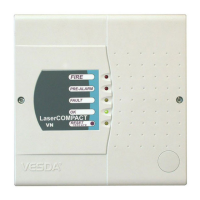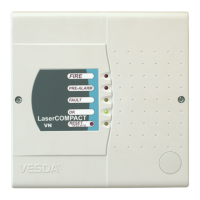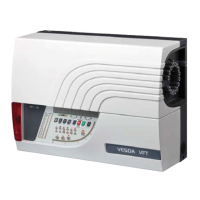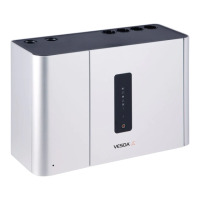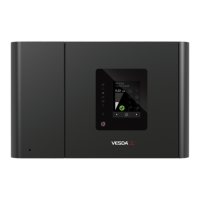VESDA by Xtralis VESDA PipeNetwork Design Guide
www.xtralis.com 1
Table of Contents
1 Introduction to Good Design 3
1.1 Introduction to Pipe Network Design 3
1.2 Before You Start 3
2 Designing a Pipe Network 5
3 Gather Site Information 7
3.1 Site Layout and Measurements 7
3.2 Regulatory Requirements 7
3.3 Air Flow 7
3.4 Ambient Conditions 7
3.5 Purpose of the Site 7
3.6 Site Construction 8
3.7 Surrounding Environment 8
4 Air Sampling Methods 9
4.1 Standard Pipe Sampling 9
4.2 Capillary Tube Sampling 9
4.3 Open Area Protection 9
4.4 Return Area Protection 12
4.5 Object Protection 16
4.6 In-duct Sampling 19
4.7 Large Area Sampling 22
4.8 Dilution 22
4.9 Cumulative Sampling 23
4.10 Reference Sampling 24
4.11 Sampling Methods for Different Applications 25
4.12 Additional Monitoring Equipment 26
5 Defining the Site 27
5.1 Regulatory Requirements 27
5.2 Fire Zones and VESDA Addresses 27
6 Plan and Map a Pipe Network 29
6.1 Grid Overlay 29
6.2 Detector Parameters 32
6.3 Site Parameters 33
6.4 Client Parameters 33
6.5 Performance Based Parameters 33
7 Choice of Detector 35
8 Designing Pipe Networks for Specific Applications 37
8.1 Standard Rooms 37
8.2 High Air Exchange Rooms 37
8.3 Localized Detection 38
8.4 High Ceiling 39
9 Testing Design Performance 41
9.1 Hole Balance 41
9.2 Maximum Transport Time 42
9.3 Hole Sensitivity 42
10 Advantages of Multi Pipe Systems 43
10.1 System Performance Graph 44
10.2 Sampling and End Cap Holes 45
10.3 Pipe Connections 45
